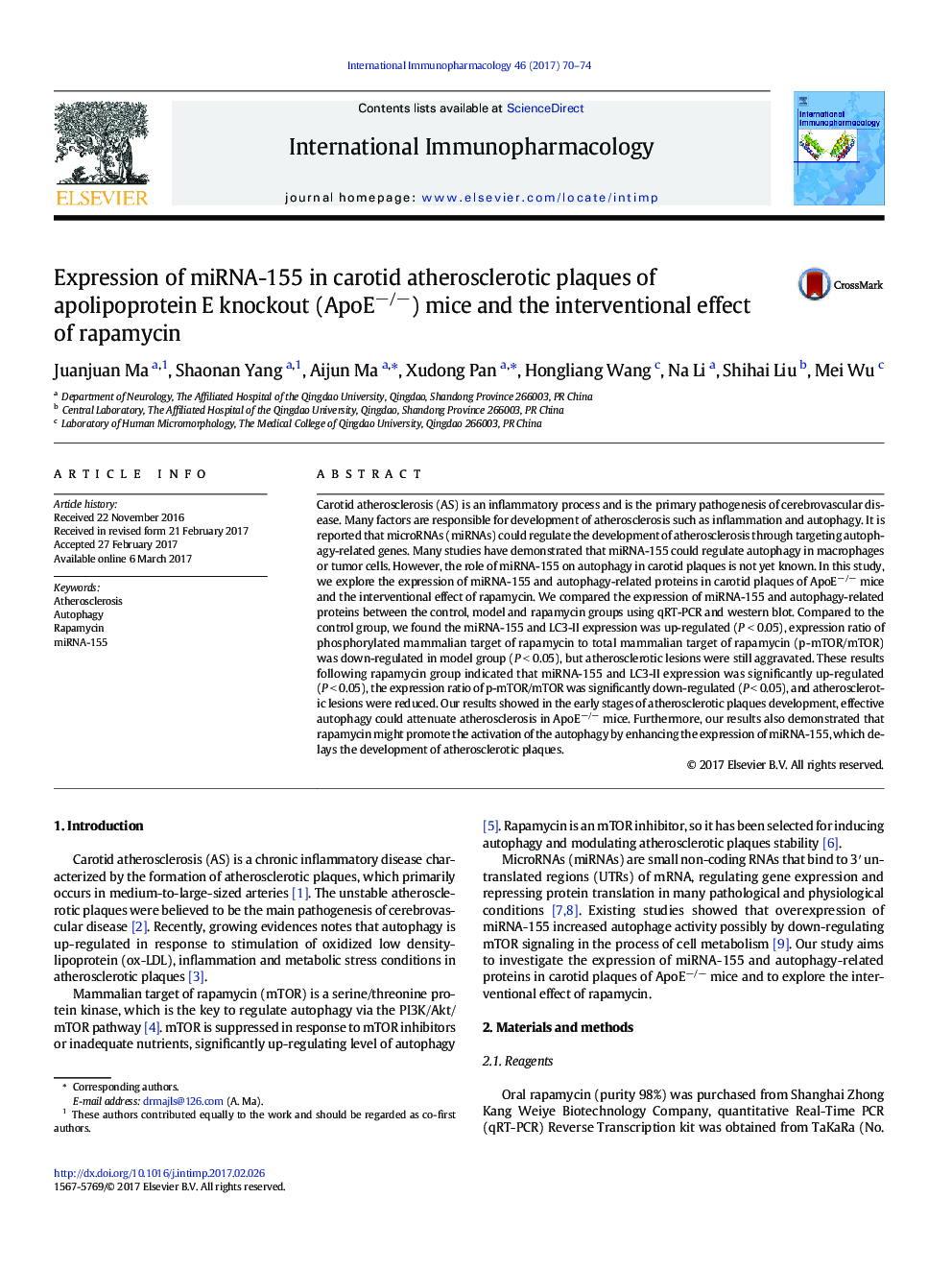| کد مقاله | کد نشریه | سال انتشار | مقاله انگلیسی | نسخه تمام متن |
|---|---|---|---|---|
| 5555564 | 1559744 | 2017 | 5 صفحه PDF | دانلود رایگان |

- In the early stages of AS, effective autophagy could attenuate atherosclerosis in ApoEâ/â mice.
- Rapamycin could affect atherosclerotic plaques development by regulating autophagy.
- In the early stages of AS, miRNA-155 might be involved in the regulation of autophagy by rapamycin.
Carotid atherosclerosis (AS) is an inflammatory process and is the primary pathogenesis of cerebrovascular disease. Many factors are responsible for development of atherosclerosis such as inflammation and autophagy. It is reported that microRNAs (miRNAs) could regulate the development of atherosclerosis through targeting autophagy-related genes. Many studies have demonstrated that miRNA-155 could regulate autophagy in macrophages or tumor cells. However, the role of miRNA-155 on autophagy in carotid plaques is not yet known. In this study, we explore the expression of miRNA-155 and autophagy-related proteins in carotid plaques of ApoEâ/â mice and the interventional effect of rapamycin. We compared the expression of miRNA-155 and autophagy-related proteins between the control, model and rapamycin groups using qRT-PCR and western blot. Compared to the control group, we found the miRNA-155 and LC3-II expression was up-regulated (PÂ <Â 0.05), expression ratio of phosphorylated mammalian target of rapamycin to total mammalian target of rapamycin (p-mTOR/mTOR) was down-regulated in model group (PÂ <Â 0.05), but atherosclerotic lesions were still aggravated. These results following rapamycin group indicated that miRNA-155 and LC3-II expression was significantly up-regulated (PÂ <Â 0.05), the expression ratio of p-mTOR/mTOR was significantly down-regulated (PÂ <Â 0.05), and atherosclerotic lesions were reduced. Our results showed in the early stages of atherosclerotic plaques development, effective autophagy could attenuate atherosclerosis in ApoEâ/â mice. Furthermore, our results also demonstrated that rapamycin might promote the activation of the autophagy by enhancing the expression of miRNA-155, which delays the development of atherosclerotic plaques.
Journal: International Immunopharmacology - Volume 46, May 2017, Pages 70-74